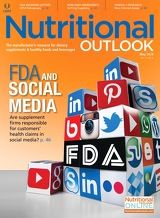When will FDA release revised NDI draft guidance?
July 4th is one expert’s prediction.

FDA’s New Dietary Ingredient (NDI) draft guidance has become a touchstone for all interested parties concerned about re-interpretations of existing law-namely, the Dietary Supplement Health and Education Act (DSHEA) of 1994. As most know, the NDI guidance, which FDA published in the Federal Register on July 5, 2011, has evoked numerous concerns-and sustained rallying cries for guidance revision-within the dietary supplements industry at large.
Again, the central concerns with the current version of the draft guidance include:
- The draft guidance indicates that FDA could require the submission of an NDI notification from every manufacturer for every finished product that contains what the FDA considers a NDI.
- It would shift the burden of proof that an ingredient is not an NDI from FDA to individual companies.
- The guidance asserts that there are no authoritative lists of “grandfathered” ingredients-dietary ingredients that existed in the dietary supplements market pre-DSHEA (before October 15, 1994)-to establish that a dietary ingredient is an Old Dietary Ingredient (ODI) and therefore doesn’t require NDI notification. This includes any lists of pre-DSHEA ingredients industry trade associations have compiled.
- Many argue with the guidance’s definition-and list of-manufacturing processes that would lead an ingredient to be considered chemically altered and thus require NDI notification. Those who criticize the guidance’s list of what comprises chemical alteration say that the list would significantly expand the category of ingredients that would require NDI notification.
- The guidance states that human-synthesized constituents of botanical ingredients are different from those synthesized by the plant, meaning that synthetic ingredients at large would require NDI notifications.
- The guidance would impose a level of data necessary to demonstrate the safety of a NDI similar to what is required for food additives, a standard that critics argue Congress and the courts already rejected during DSHEA’s implementation.
Again, here is a detailed discussion on the main points of concern with FDA's NDI draft guidance.
A Look Back: Initial Industry and Consumer Response
In response to the guidance, several industry trade associations issued calls for a revised guidance. In addition to the 144,000 pages of comments ultimately submitted to FDA’s public-comment docket on the guidance, consumer groups, such as Citizens for Health and the Alliance for Natural Health, mounted sustained grassroots campaigns that generated thousands of consumer letters also calling for guidance revision.
At the end of 2011, the American Herbal Products Association (AHPA; Silver Spring, MD) stated that, if implemented as written, “[The guidance] would change the rules that have been in place for the last 17 years and significantly increase the burden on the supplement industry far beyond the intent of Congress, with no concomitant benefit for consumers.”
AHPA went on to call for the draft to be completely withdrawn, describing the draft guidance as “hugely flawed” and as “seek[ing] to erect extra legal barriers to market entry, impose food additive–type evaluative criteria, [and] require multiple NDI notifications for dietary supplements beyond those required by law.” AHPA also argued that the guidance, as written, would transform the NDI legal requirements for the marketing of dietary supplements from a notification process to one of FDA preapproval.
On December 2, 2011, Steve Mister, president and CEO of the Council for Responsible Nutrition (CRN; Washington, DC), was quoted as saying, “The draft guidance would essentially undo nearly two decades of agency practice and policy that began with DSHEA’s passage” and would “impose significant and unnecessary burdens on the industry, stifle innovation, and curtail industry growth-without conferring additional safety benefits to consumers.”
Possible Impact on the Market
Data from Emory University in Atlanta, GA, predicted that the NDI guidance, if adopted as originally proposed, would force between 22,240 and 41,700 dietary supplements to be removed from the market, resulting in an economic loss of between $5.6 billion and $10.5 billion.
“I can’t comment on whether the estimates in the Emory University study are too high or too low,” Michael McGuffin, AHPA’s president, tells Nutritional Outlook today. “But it is certain that the impact of the guidance as written is far higher than FDA’s own economic analysis that accompanied the promulgation of the actual NDI regulations. At that time, the agency’s financial impact discussion strongly implied that only one NDI notification would need to be submitted for each ingredient that is actually an NDI, presumably by the ingredient supplier. On the other hand, the draft guidance suggests that every finished product marketer that includes the NDI in its product would need to file separate submissions,” a much more consuming burden.
As to why the current draft guidance seems so off the mark to many, attorney Justin Prochnow of Greenberg Traurig LLP looks at it this way: “I truly believe that FDA believes there has been an overall lack of compliance in [the NDI] area, and it wants to see better compliance. The problem becomes that FDA has let [non-compliance] go on for so long that it is going to be hard to rein in. If every company filed every NDI that would be required under […] FDA’s interpretation of the guidance, there would not be nearly enough personnel to handle the submissions. This is the very reason the GRAS process became voluntary.”
In June 2012, FDA agreed to re-work the draft, but has released nothing, to date. In July 2013, Representatives Frank Pallone (D-NJ) and Brett Guthrie (R-KY), along with 27 other House members, sent a letter to FDA Commissioner Margaret Hamburg urging the agency to expedite its efforts to release the draft guidance.
Watch…and Wait
What’s the status of the guidance today? We’re still waiting. According to CRN’s Mister, “CRN has had a series of very productive conversations with FDA about the original draft guidance, and we are optimistic that the agency will address many of the items that we had concerns with.”
“We are cautiously hopeful that the agency listened to our views and will incorporate many of our suggestions into the new draft,” Mister adds. “At this point, we plan to wait until the new draft is released before making further comments.”
“It’s time to change the dialogue from one where all we do is complain about FDA’s overreach with the issuance of its unacceptable draft NDI guidance,” says McGuffin. “We need to continue this complaint, but we also need to communicate to the trade that DSHEA’s NDI burden, as written, is an acceptable regulatory burden and that companies that address this burden professionally are successful-and then receive the return on this premarket investment by selling their NDIs.”
Asked about his best guess as to when a proposed NDI final guidance might be issued, Prochnow predicts: “By July 4, 2014, the three-year anniversary of the last version.”
Will it be July 4, 2014? We will have to wait and see whether and when final guidance will signal more of-or a possible end to-the ongoing NDI battle.
More reading on FDA's NDI draft guidance:
NDI Draft Guidance: New Suggestions on What Data Firms Should Submit to Identify an NDI

HHS announces restructuring plans to consolidate divisions and downsize workforce
Published: March 27th 2025 | Updated: March 27th 2025According to the announcement, the restructuring will save taxpayers $1.8 billion per year by reducing the workforce by 10,000 full-time employees and consolidating the department’s 28 divisions into 15 new divisions.

















